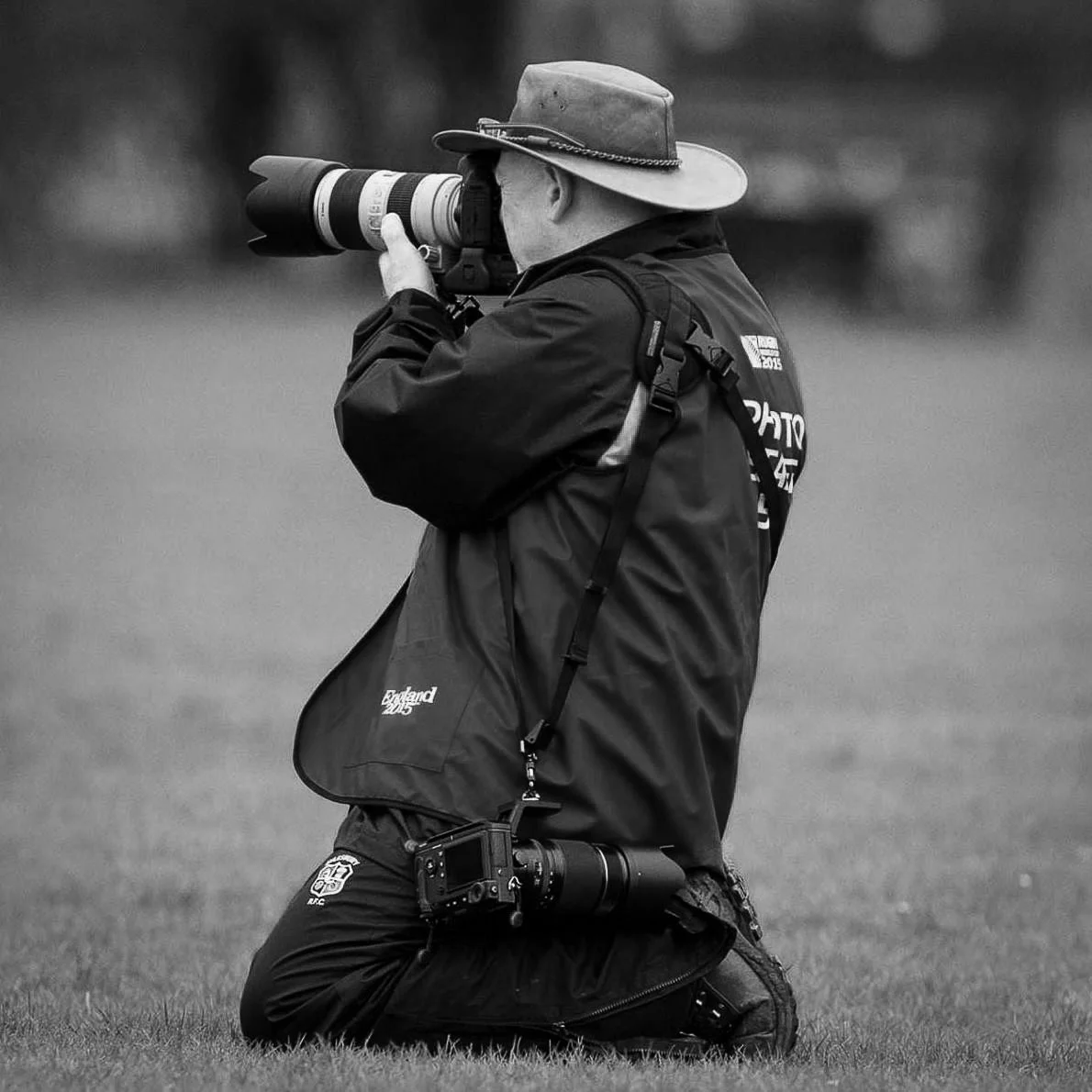
Saturday Afternoons
All these images feature players from Aylesbury Rugby Club, the club that I had joined at the start of the new millennium, and where I stayed for the next 17 years, first as a player and then as a manager.
The majority of the photographs are of the club’s 1st XV, the team that I was proud to be part of as their manager for 10 years.
A collection of these images have now been published in the book - “Saturday Afternoons” available here.
-

The Game
Mud, sweat and rain. Images from the heart of the game.
-

The People
Candid moments from before, during and after the match.
Saturday Afternoons, and how it all started…
Rugby has over the years been quite influential in shaping the course of my life, and ultimately it was to be instrumental in taking me into the world of professional photography.
I had always enjoyed my time on the sports field during my school years, playing rugby from the age of seven, and representing my school at every age level.
However, shortly after I began playing club rugby in my teenage years, a turn of events in my home life led to an earlier than planned departure from the world of education, and the sudden entry into the harsh reality of working life.
Saturday afternoons were no longer my own, and the need to earn a living now trumped the pleasures of the rugby pitch.
But, some twenty-odd years later, I would once again find myself on the side of a rugby pitch, this time as a spectator, and a long-forgotten desire was rekindled, and not long after I was back in training.
I was now running my own business and was to some extent the master of my hours, so now I thought would be a good time to claim back my Saturday afternoons.
It has to be said that I was also now into my early forties, and despite getting my body back to a level of fitness that even my teenage self would have been impressed by, there was no way that the skills I had previously shown on the rugby fields of my youth were ever likely to return.
But it did mean that I would get the chance to enjoy a few seasons of sharing the field with, often much younger, and far more adept players than myself.
It was fun, and I loved it.
Sadly, and as the saying goes, all good things must come to an end, and so it was in my case, and in a rather painful way.
I had been suffering from some lower back pain following games, but then one Monday morning whilst driving to work, I experienced what felt like a hot knife being thrust into my upper leg. The pain level was off the scale.
Turned out I had three prolapsed discs in the lumbar region of my spine, one of which was starting to get very closely acquainted with my femoral nerve.
My all too brief sojourn into the world of playing rugby had come to an abrupt end.
Six months off work on a regime of powerful painkillers followed, before eventually I went under the knife for some fairly major spinal surgery.
No more contact sports for me, but that rugby club had become my second home.
It had started off being a place of respite from the stresses of running a business, plus as an escape from a failing marriage.
By the time my spine had cried enough from the abuses it had received in the front row of the scrum, my business had closed and I was divorced and beginning a new chapter in my life.
Although no longer able to play, I could not just walk away from this game that had become such an integral part of my world.
As it turned out, my off-pitch managerial and organisational abilities proved to be far more useful to the club than my somewhat questionable ball-handling skills.
So my Saturday afternoons on a rugby field would continue, albeit that I was now alongside the pitch, with a clipboard, a pen, and as luck would have it, my camera.
One day I noticed that one of my images from the club website had been ‘borrowed’ by our local newspaper, and published alongside the match report of one of our away games.
A quick phone call to a very apologetic sports editor resulted in an opportunity that was to prove advantageous to both of us.
The paper would always send one of their photographers along to our home games, but now they had a ready-made source of images for the away matches too.
Before long I would be supplying both the reports and the photographs from all our games, both home and away.
In a town that supported two semi-professional football clubs, it was always a great feeling to see my images keeping the round ball game off the back page.
I guessed I must have been doing something right, so I rather presumptuously inquired if they might need a photographer to cover other stories, and so began my first steps into the world of the working photographer.

